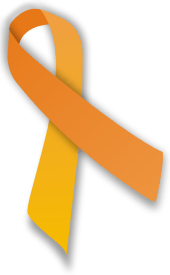Harmony Day
Harmony Day is held on March 21 in Australia. Harmony Day is intended to show cohesion and inclusion in Australia and promote a tolerant and culturally diverse society.
Harmony Day began in 1999, coinciding with the United Nations International Day for the Elimination of Racial Discrimination and each year, it is marked by people coming together and participating in local activities. The continuing message of harmony Day is 'Everyone Belongs'. It is about community participation, inclusiveness, celebrating diversity, respect and a sense of belonging for everyone.
Communities themselves decide how they would like to come together to mark the occasion – some have morning teas, others organise a fair and some celebrate by dressing in national costumes. Since 1999, a wide variety of groups including sports organisations, community groups, local government, churches, schools and businesses have staged more than 55 000 Harmony Day events, with nearly 6,500 events registered in 2011. In 2012, the theme for Harmony Day was 'Sport: Play, Engage, Inspire', recognising the important role and positive influence that sport has in Australia.
Orange is the colour chosen to represent Harmony Day. Australians are encouraged to wear orange clothing and/or the distinctive orange ribbon to show their support for cultural diversity and an inclusive Australia.
Diversity and Social Cohesion Program
The Diversity and Social Cohesion Program has two key elements: Community Grants and Harmony Day. The Diversity Cohesion Program provides funding, education and information to help organisations create a spirit of inclusiveness and helps ensure all Australians are treated fairly regardless of their cultural background or circumstance.[1]

Criticism
Dan Ryan, writing in The Australian in 2011, criticised Harmony Day, likening it to government projects in communist-ruled China. He said that harmony is aimed for by oppression of liberties in China, and is therefore impossible to achieve in a democratic country such as Australia.
- "The problem with the harmonious society is not just the disconnect between the rhetoric and the reality. The truth is, while superficially sweet-sounding, the idea is illusory and utopian. We may all wish in the abstract that everyone got along, but the reality is that free societies by their nature are cacophonous, argumentative and full of dissent."[2]
He also said that multiculturalism was being whitewashed by the government and media.
- "If it is decided that we must restrict speech or avoid discussing certain subjects to keep the peace over an apparently combustible population, might now not be the time to ask whether this type of harmony is worth celebrating?"[2]
Grette Toner, in an Australian Curicculum Studies Association paper titled Beyond Harmony: Rethinking Intercultural Learning for Australian Primary Schools, visited a primary school and found the day's activities to be "largely symbolic...difficult to gauge what students learned". Criticism was also aimed at the school not involving anybody from outside of it.[3]
References
External links